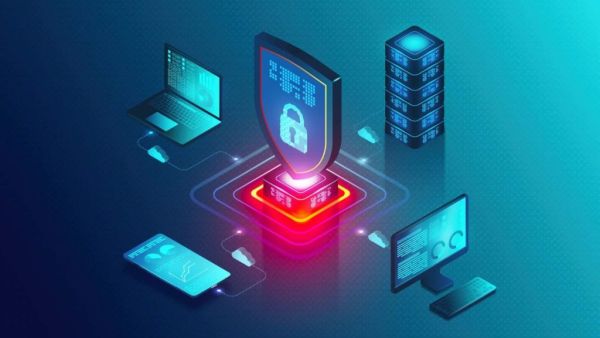
As an entrepreneur in an ever-evolving digital landscape, you’ll face multiple risks that may often fly under the radar. Although benign, these risks can have a massive impact in your business and affect your continuity. Some vulnerabilities emerge from new technologies like IoT, Artificial Intelligence and remote work.
Below, we explore some of these risks and actions you can take to stay vigilant and proactively anticipate and address hidden cybersecurity risks.
Employee Training and Insider Risks
As an entrepreneur, you understand that your employees represent both a critical first line of defense and a potentially devastating vulnerability to your cybersecurity posture. Since human error is the largest source of data breaches in many companies, proper training and engagement are critical to the success of your data security.
Untrained staff pose a hidden risk to your business, as they will often make poor decisions that expose you to cyberthreats. Often, exposure is a result of negligence, ignorance, inaction, or malice, especially if your business operates a complex digital operation.
Present and former employees, contractors, partners, service providers, and other insiders can also increase your risk profile. Since they have legitimate authorization to access your digital systems, they may be directly or indirectly responsible for data breaches.
For instance, a disgruntled former employee may expose you to cyber threats, motivated by revenge, financial gain, or espionage. Other partners may expose you to attack because of negligence, ignorance, or misconfigurations.
Addressing Employee and Insider Risks
Employee training is a critical cybersecurity tool that combines psychology, technology, and organizational change management to increase employee awareness and inspire behavioral change. Here’s how that works:
- Create clear security and incident reporting policies that enable your team members to act promptly to cyber threats. These should also cover insider actions and consequences.
- Institute continuous learning and microlearning that always keeps cybersecurity on your employees’ minds in the workplace
- Run real-world simulations of common attacks to assess and improve your employees’ readiness in case of a breach.
- Tailor your training to each team member’s specific job function, ensuring members with higher risk profiles receive more comprehensive training.
Regular Updates and Patch Management
Patch management automates the process of identifying, testing, and deploying software updates across all edge devices and applications. Without regular updates, your computer systems become susceptible to data breaches and zero-day attacks. Technical cybercriminals use the existing vulnerabilities in unpatched software to launch intrusion attacks.
Additionally, unpatched software can create instability in your system, including unexpected system crashes, downtime, and incompatibility with newer systems. Besides leading to major financial losses, unpatched systems can expose you to compliance and legal risks, and loss of customer trust.
Addressing Patch Management
- Prioritize critical patches to cover gaps that cybercriminals actively exploit. That reduces your immediate exposure.
- Automate vulnerability scanning to find other vulnerabilities in your systems, identifying potential areas of improvement.
- Use automated patch management tools to actively scan, identify, and apply critical patches to your systems.
- Replace all deprecated hardware and software systems, switching to more modern cloud solutions.
Compliance and Regulatory Requirements
Unlike in the past, governments have greater oversight of small and medium businesses, requiring them to comply with data security and privacy laws. As cyber threats grow more sophisticated, so does the regulatory landscape.
Compliance with these laws can help your business build trust, protect sensitive data, and ensure business continuity. Ignorance of regulations and non-compliance can expose you to many hidden risks, including legal penalties, fines, and potential litigation from customers and stakeholders in case your business faces a cybersecurity breach.
Some common regulatory frameworks your business may comply with include:
- General Data Protection Regulation (GDPR), which governs data privacy for EU citizens and impacts any business handling EU data.
- Health Insurance Portability and Accountability Act (HIPAA), which applies to businesses handling healthcare information in the U.S.
- CCPA (California Consumer Privacy Act), which focuses on consumer data privacy in California.
- IoT Cybersecurity Improvement Act, which addresses security standards for connected devices.
Addressing Compliance and Regulatory Requirements
Complying with regulatory policies is the best way to address this risk. Here are some ideas to help:
- Conduct regular risk and gap analysis to identify any potential regulatory vulnerabilities your business has, giving priority to immediate remediation.
- Employee training is another critical part of compliance, as it helps your staff understand and meet all compliance obligations.
- Establish data protection policies that encrypt sensitive data. Additionally, use Data Loss Prevention tools that reduce your risk of data loss.
- Develop and enforce password management policies, including Multi-Factor Authentication (MFA), incident response, and secure networks.
Remote Work and IoT Vulnerabilities
A distributed workforce and a hybrid environment can increase your cybersecurity risks, as it expands your digital attack surface. Since your employees can access corporate systems from diverse locations and devices, they operate outside the security perimeter of a discrete office network.
With an expanded attack surface, cybercriminals can access your systems using a vulnerable endpoint. Often, this will be a laptop, smartphone, Wi-Fi network, or IoT device with a vulnerability. Additionally, some employees may use personal devices to access corporate resources, and these devices may become a vector for malware and data leakage.
Additionally, your company has little oversight over your employees’ activities and their abilities to handle sensitive data securely from remote locations. Because of this exposure, family members, friends, and other unauthorized persons may access sensitive data.
Best Practices in Remote Work and IoT
Here are some ways to address these vulnerabilities:
- Enforce zero-trust principles that continuously verify the identities of your employees before gaining access to secure business data. You can also use MFA and Single Sign-On to reduce credential theft.
- Train employees on proper cybersecurity hygiene, phishing awareness, and safe device use.
- Segment networks, separating IoT devices from critical business systems. This reduces your attack surface.
- Deploy Endpoint Security and Device Management, using Mobile Device Management (MDM) or Endpoint Detection and Response (EDR) tools to enforce security policies on remote and IoT devices.
Ahmedabad Plane Crash
-
How this 400-year-old outfit still rules Hyderabadi weddings

-
HDFC ATM theft in Hyderabad: 3 held, Rs 17 lakh recovered

-
IIT Madras to offer tech courses for Telangana school students

-
Manchester Test Records: India or England - Who Has Upper Hand?

-
Rupee Drops 15 Paise, Closes At 86.07 Against US Dollar
